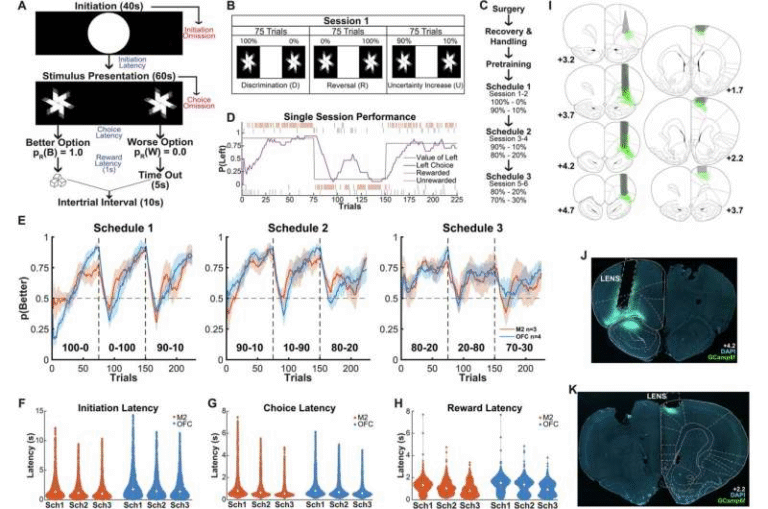Upstream Suicide Prevention: Going Beyond Mental Health to Spot Risk Earlier
Suicide prevention often focuses on mental health diagnoses or crisis care—but new USC studies suggest that many people who die by suicide never had any known psychiatric history, and most fail to disclose warning signs. That means we need to look upstream: at stressors, life transitions, and informal networks—and involve nontraditional sectors to catch risk earlier.
Why “upstream” matters
What stands out in the latest research is this: more than half of people who die by suicide don’t have a previously documented mental health condition. (USC Social Work) Many of these deaths happen on a first suicide attempt, with little or no sign to others that the person was considering it. (USC Social Work) Also, 50–60% of people who die by suicide never tell anyone beforehand. (USC Social Work)
These realities underline a core challenge: if we wait for individuals to disclose or show signs of psychiatric distress, we risk missing many who fall through the cracks. So, what if we could intervene earlier—before someone reaches a crisis point? That’s what the two USC projects aim to do.
Project 1: Partnering with “industries of disruption” (Blosnich’s work)
Lead researcher: John R. Blosnich, associate professor and director of the Center for LGBTQ+ Health Equity at USC (USC Social Work)
Goal: Identify and involve professions that routinely interact with individuals in high-stress periods (e.g. during divorce, foreclosure, unemployment) as gatekeepers for suicide risk.
Blosnich calls these sectors “industries of disruption”—fields where people already turn during life crises (but which are outside the usual mental health system). (NIH Common Fund) His initial focus is on family law attorneys.
What the attorney study reveals
- A mixed-methods approach: an online survey of 294 family law attorneys, plus 17 in-depth interviews. (USC Social Work)
- Striking statistics: 36% of respondents report having a client die by suicide, while 70% say they’ve had a client they believed was suicidal. (USC Social Work)
- Nearly two in three attorneys expressed openness to suicide prevention training (online or in-person). (USC Social Work)
- Challenges: attorneys must navigate attorney-client privilege and risks of mental health being used adversarially in legal contexts. (USC Social Work)
Beyond family law, the broader “industries of disruption” under study include banks, mortgage providers, workforce development boards, self-storage companies—all fields that people engage with during upheaval. (USC Social Work)
Blosnich frames the work as a social autopsy: rather than focusing solely on psychological autopsies (which reconstruct mental health history), this approach delves deeply into life events (divorce, financial collapse, job loss) and how people intersect with non-clinical services at those moments. (NIH Common Fund)
Project 2: Predicting disclosure in the military (Rice’s work)
Lead researcher: Eric Rice, professor and co-director of USC’s Center for AI in Society (USC Social Work)
Goal: Use machine learning and social network data to predict who a service member is likely to confide in about suicidal thoughts—then build capacity in those network ties to act as safe, effective interlocutors.
How the study works
- Sample: 241 active-duty U.S. Army personnel (from a single battalion), surveyed before deployment. (USC Social Work)
- Participants named up to 10 people with whom they had recent interactions, rated relationship quality, and indicated likelihood of disclosure. (USC Social Work)
- Decision tree models were used to classify whom someone might disclose suicidal ideation to, based on relational qualities. (USC Social Work)
What emerged
- Quality of the relationship matters more than individual traits: emotional + informational support levels strongly predict willingness to disclose. (USC Social Work)
- Only 6% would confide in someone who had not previously been supportive, but 86% would to someone already offering both support types. (USC Social Work)
- This points to a promising intervention: training those in people’s support networks to respond well when disclosures occur. (USC Social Work)
Rice and his co-investigators argue that many military suicides are tied not to diagnosed mental health conditions but to life transitions (joining service, returning, separation). (USC Social Work) They note that preexisting mental health diagnoses feature in only around 45% of military suicides. (USC Social Work)
Why this shift in perspective is so important
- Traditional models fall short. A heavy focus on mental illness alone overlooks many at-risk individuals who never had a diagnosis or never reached clinical care. (NIH Common Fund)
- Life disruptions are often the trigger. Divorce, unemployment, eviction, financial collapse—these stressors can push people toward despair even in the absence of a diagnosable disorder. (NIH Common Fund)
- Nonclinical touchpoints create new detection opportunities. Lawyers, bankers, social services, and others might act as early detectors and connectors to help.
- Informal supports hold power. In the military study, people often confide in close networks—not clinicians. Strengthening those networks is a critical upstream maneuver.
Broader context: evolving national strategies
These USC projects reflect a broader public health shift in suicide prevention. The 2024 National Strategy for Suicide Prevention emphasizes upstream approaches—addressing root causes before crises emerge. (HHS.gov) And in August 2025, the Action Alliance launched new resources (“Moving Suicide Prevention Upstream”) to help communities and organizations implement upstream plans. (The Action Alliance) These tools offer guidance on community partnerships, messaging, and structuring prevention systems earlier rather than waiting for direct crisis signs. (The Action Alliance)
A few caution points & needed next steps
- The attorney study is based on self-reported data and isn’t yet an intervention trial. It’s descriptive: showing exposure, interest, and possibility.
- The military sample is from one battalion and reflects intent and network reporting, not necessarily real-world disclosure behaviors under extreme distress.
- Scaling these ideas will require ethical frameworks, privacy safeguards, adaptation to local legal and cultural context, and robust evaluation of training efficacy.
What readers should take away
We tend to think of suicide prevention as something confined to psychologists and psychiatrists. But these studies show that many people most at risk never enter the mental health system. To stop more tragedies, we need to expand who is trained to notice, where those notices can occur, and how help can be offered earlier.
In short: upstream prevention means locating risk in everyday life transitions and building bridges in places where people already interact. Lawyers, banks, friends, coworkers—these become potential allies in spotting distress.
If you’re writing or advocating about mental health, this work nudges us to think more broadly: reducing the emphasis on diagnosis alone, and increasing imagination about where, when, and how we intervene.
Full research reference:
Blosnich, J. R. et al. Industries of disruption: New avenues for upstream suicide prevention. arXiv preprint arXiv:2508.18541v2. (arxiv.org)






